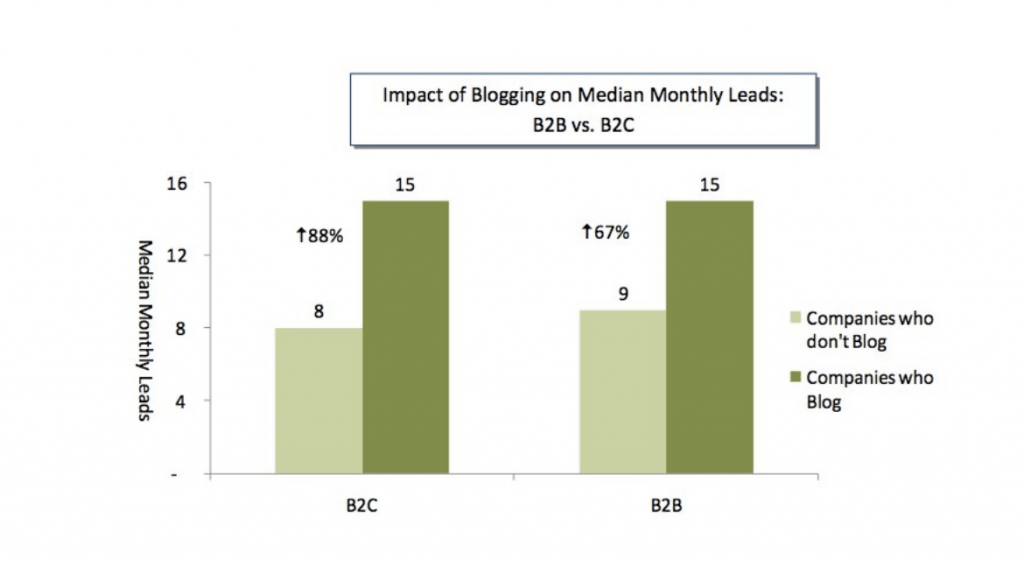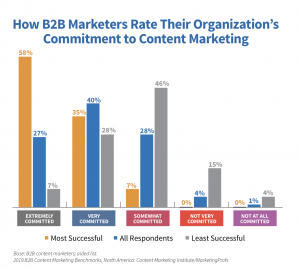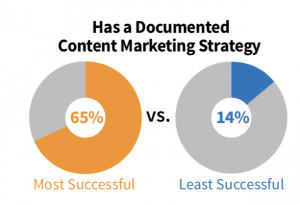
Updated October 2020
Even as content marketing becomes an indispensable part of any online marketing plan, many businesses struggle with doing it effectively. For content marketing to work you have to commit to doing a lot of work, consistently, and indefinitely. It can be overwhelming. And considering the level of investment that good content marketing requires, doing it badly comes at a big cost for small results.
One of the best tools you have to make the overwhelming more manageable and get better results from your content marketing is a content marketing calendar. And research backs this up: Content Marketing Institute’s 2020 survey found that 80% of the most successful content marketers have an editorial calendar.
What is a Content Marketing Calendar?
A content marketing calendar is a plan for your future content that’s tied to specific dates and deadlines. Your content calendar will make clear:
- Who’s responsible for each content task (e.g. writing, editing, image creation, etc.)
- When their part of the work is due
- When the content will be published
- When and how it will be promoted and distributed
By documenting all this information, you take the chaos of all the work involved in content marketing and turn it into something organized and workable.
Why a Content Marketing Calendar Makes a Difference
If you don’t use one now, creating and sticking with a content marketing calendar will completely transform the way you do content marketing. The many benefits it brings will add up to a better-run content marketing program and improved results. Here are a few of the specific benefits you can expect.
1. Breaking a plan down into a timeline helps make it real.
Coming up with good ideas is a great skill to have but, as many people learn the hard way, executing on those ideas is the harder part. For your great ideas to become reality, you have to tie them to a plan of specific action steps.
In marketing, the difference this makes has been proven. CoSchedule found that marketers that create a documented strategy are 313% more likely to find success than those who don’t. In content marketing, an important part of that strategy is creating a content calendar that breaks down your big ideas into specific tasks that your team can and will complete.
2. You can plan out how different pieces of content support each other.
None of the content you create exists in a vacuum—or it shouldn’t, anyway. You want blog posts that drive people to your ebook, and social media posts that drive people to your blog. Your content should help get people to sign up for your email list, then your emails can help promote your content. It’s all connected.
In order to plan out relevant connections between the different parts of your content strategy, you need a high-level view of everything you’re creating. And to keep all the connections in your strategy organized and on schedule, you need to know when your different content pieces will be ready and published.
Your content calendar will make it possible for you to make sure those blog posts that promote your big ebook go up after the ebook is ready, and that your infographic is ready in time for the big social push you’re planning to promote it.
3. An organized schedule keeps everyone on the same page.
Content marketing is rarely a one-person job. You have your content strategist, writers, designers, and social media coordinators—a full team of people who each play an important role. For every person to do their job well and on schedule, they need to know when they can count on others to do theirs.
If your writers don’t have clear deadlines, then the designers are stuck never knowing when they can start on the blog post images or slideshows they’re supposed to work on. And you’ll never know when you’ll be able to publish the pieces you have planned.
When no one can plan, you won’t know how long creating each piece of content will take, and publishing consistently will be impossible.
4. Planning a calendar in advance helps you incorporate holidays and industry events.
Your audience will have different concerns at different times of year, and you’ll have different events to promote. Your content should reflect this. If your audience is accountants, then planning out content that speaks to what they’re dealing with in the thick of tax season shows you understand what they’re going through. But you don’t want to think about creating that content for the first time on April 10—five days before most taxes are due—and hope your team can pull something together at the last minute.
With a content calendar, you’ll sketch out your plan for a season far enough out that you have time to think through all the important holidays, seasonal concerns, and industry events to address in your content.
5. Content marketing calendars aid in consistency.
It’s hard to get a blog post up every day or week, and an email out every week or month. It’s hard to get social media posts up multiple times a day, and even harder to get high-value gated pieces created regularly.
All of those things are a lot harder to do with any consistency if you don’t have a clear calendar in place. And if you publish three blog posts one week and nothing for another month, you look sloppy. If your emails come in inconsistently enough for people to forget who you are, they’ll stop opening them.
Inconsistency has a cost, but it also has an easy solution.
Start Using a Content Marketing Calendar
A content marketing calendar turns the chaos of content marketing into order. It helps you turn your ad-hoc content creation into an organized strategy where all the different pieces work together in a unified whole. And it will ensure you keep your plans and deadlines realistic. It’s one of the most important and valuable tools in the content marketer’s toolkit.














